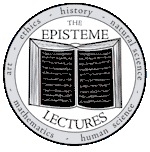Tuesday, March 24, 2009
touch as a way of knowing
Touch is a necessary way of knowing in almost every areas of knowledge. It might not be primary, but definitely important. Since we are talking about art, I’ll use art as an example. Art is certainly an area of knowledge where I find touch to be a primary way of knowing. Besides viewing a piece of artwork, the texture of the particular artwork is also very important. Through creating texture, artists can often express their individuality. An artwork with texture is usually more alive and interesting. Van Gogh for example is known for his use of texture. While viewing an artwork, people, including myself, are often tempted to touch the work and feel it. Through touching an artwork, one can learn more about the art, including the style, the theme and so on. Texture is an important element of art, mainly visual art. In the museum, visitors are not allowed to touch the artworks in order to prevent possible damage. However, “the problem with this is that it ignores and leaves out all those many artworks that the artist intended to be touched, handled, interacted with and explored in many different ways, including multi-sensory approaches. It also ignores the exciting input that artists can have in designing and creating interactive, which can give unique perspectives on other artists’ work.” Touch is even more important while judging sculptures and potteries, since how smooth the surface of, for example, a ceramic piece, determines its quality and value. Touch is a primary way of knowing in art. It is, however, less relevant to abstract areas of knowledge such as mathematics since numbers and calculations are often abstract ideas that touch can not be applied to.
Subscribe to:
Post Comments (Atom)



No comments:
Post a Comment